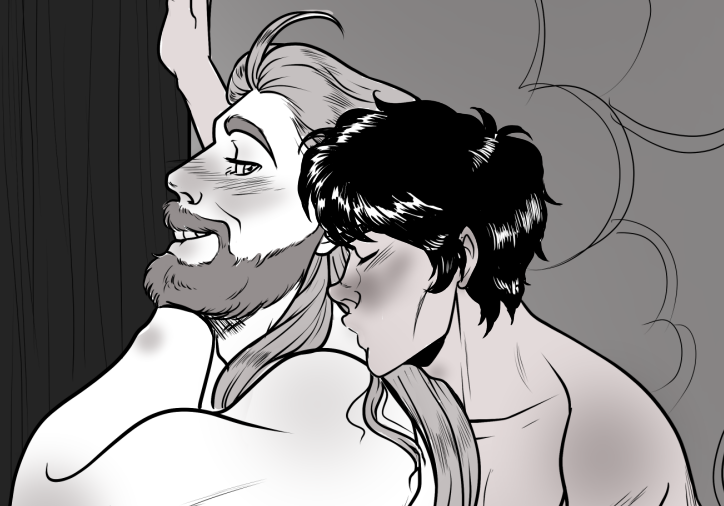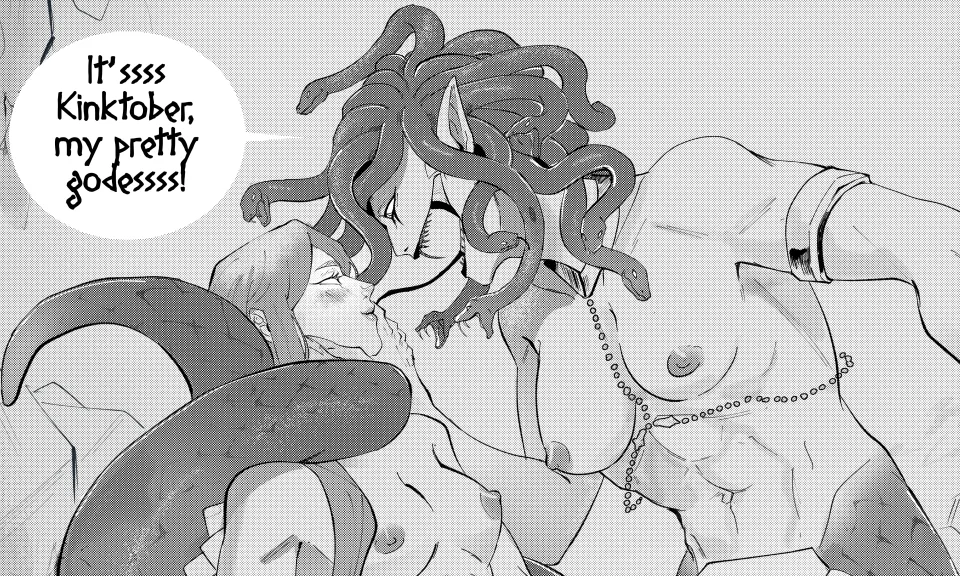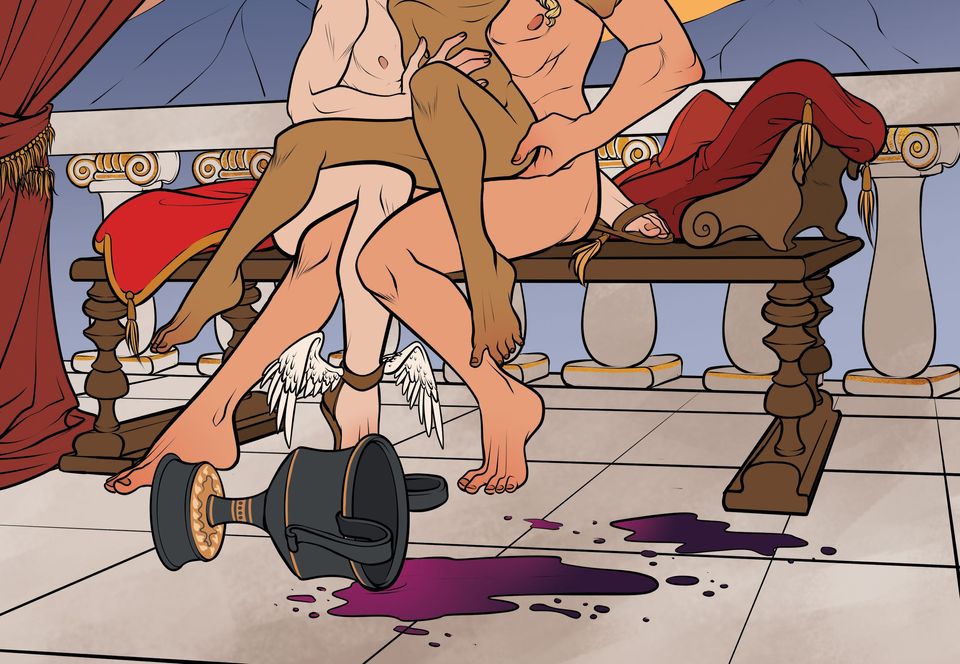Illustrated Fiction: Stables Enough (Hermes / Freyr)

Hello my dear demigoddesses and demigods,
I completely dropped the ball here as it is already December when you read this, the last day of the year. I've been having some mental health issues – nothing too serious but my employer sent the termination notice this month and I'm not getting any leave of absence. Meanwhile my lawyer demands of them to pay out my remaining days of annual leave with my employer reacting by sending me a written request to take the remaining annual leave. I am absolutely clueless about the pitfalls of the law, so I have no idea if I'll get any days off at all or if I'll remain "on call" until my contract is supposed to end by the last day of February. As much as I could use the money, I honestly would rather be officially off for a couple of weeks. The uncertainty of the day job situation is starting to wear me down and has been robbing me of the joy of creating in the last couple of weeks. Then the Christmas labour camp started when I arrived at my folks for the holidays.
HOWEVER I have been looking forward to writing this, a part of Hermes' and Dionysos' adventures in Asgard. You can download the first story in the series at the bottom of this page in epub and mobi format as a little Saturnalia present and an apology both for being late with this story and for not publishing any books this year. The second part of the mini series is Dionysos and the Valkyrie and December's story will likely conclude the narrative. If all goes well and I indeed have some time next year, I want to publish the "Asgard stories" as an ebook series (and bundle) which I will happily put up for you to download when the time comes.
The illustration of Freyr and Hermes getting it on in the stables was created by Arja whom you should follow on BlueSky and Tumblr if you don't already. She regularly blows me away with her vast knowledge of historical fashion and culture. This time, she not only drew Freyr with beautiful shoes based on archaeological finds with the period typical woollen wrappings, she even provided me with a source on Norse magic that you will find below among the sources. Special shout-out also to Fire, who translated some Danish and Norwegian sources for me and helped me find details on bronze and Viking age farm life as well as old races of lifestock. One more shout-out to Koko, who also helped me with infos on the farming. As you may have guessed, my own hands-on experiences with cattle are limited 😅
If you are not (yet?) a demigod patron, find the plain text version here.
But now, without any further ado, the glossary:
Glossary
Ás: the singular of Æsir in modern Icelandic since the old Norse spelling is Áss and I didn't want to cause any confusion.
Chiton: an ancient Greek piece of clothing akin to the Roman tunic.
Chlamys: a short cloak worn by travellers in ancient Greece.
fascinating: Hermes is making a pun here, since fascinating derives from the Latin verb fascinare, "to use the power of the fascinus", an amulet in the shape of a phallus, and therefore, by extension, it means "to use magic".
Freyr: a Norse god associated with sacral kingship, fertility, peace, prosperity, and virility, with sunshine and fair weather, and with good harvest. According to Adam of Bremen, he was associated with peace and pleasure, and was represented with a phallic statue in the Temple at Uppsala. Both the Poetic Edda and the Prose Edda tell the story of how Freyr made the female jötunn Gerðr his wife, but at the time this story takes place, he's still single.
Grikk(j)ar: the old Norse word for the Greeks as it appears in 25 runestone inscriptions. I chose the spelling Grikkjar as it is more similar to the Einherjar from the Poetic Edda.
Grikkland: the old Norse word for Greece as it appears in three runestone inscriptions.
Northern lights: the Old Norse word for the aurora borealis is norðrljós, literally "Northern lights".
Palaistra: also palaestra, ancient Greek wrestling grounds under the protection and patronage of Hermes.
Runes: a writing system for various Germanic languages before the adoption of the Latin alphabet, the oldest of which is the Elder Furthark (150–800 CE). Runes were probably also used for magical purposes such as magical signs for charms. Freyr's use of them was inspired by stanza 157 of the Norse poem Hávamál but mostly made up by me. Egil's Saga, in which Egil paints runes with blood, served as inspiration for the painting of these runes 😉
Serika: one of the easternmost countries of Asia known to the Ancient Greek and Roman geographers. It is generally taken as referring to North China during its Zhou, Qin, and Han dynasties, as it was reached via the overland Silk Road. The name seems to derive from the Greek word for silk: σηρικός, sērikós.
Þorsteinn: an Old Norse and Icelandic masculine given name derived from Þor "Thor", "thunder", and steinn, "stone". Modern versions of the name are Thorsten or Dustin.
Vanr: the singular of Vanir, a group of gods that became a subgroup of the Æsir after an Æsir–Vanir War. Therefore, members of the Vanir are sometimes also referred to as members of the Æsir. The sea god Njörðr, and his children Freyr and Freyja are the most well-known members of the Vanir.



